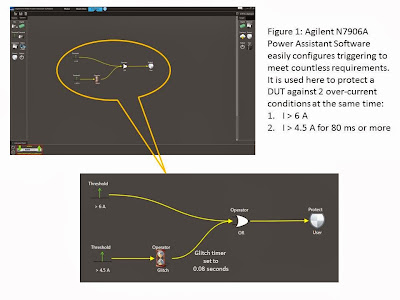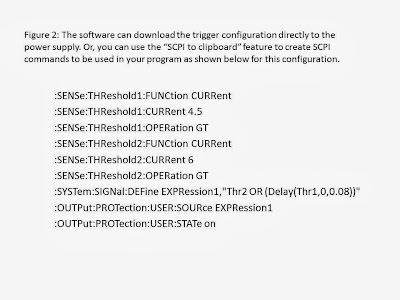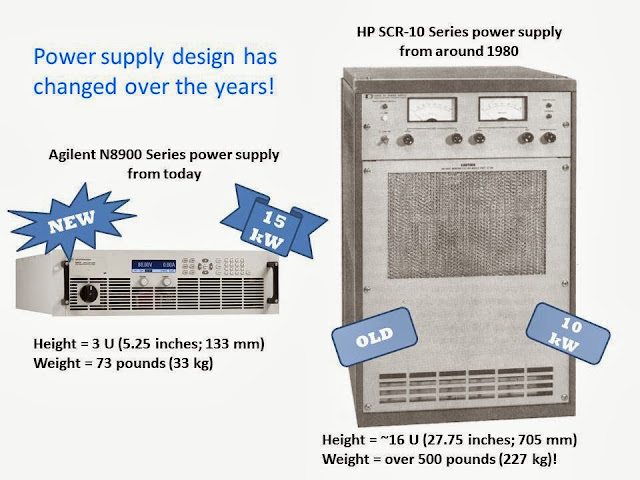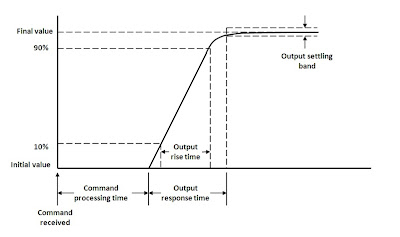Last month, I posted about one of our new families of
products: the N6900/N7900 Series 1- and 2-kW Advanced Power System (APS) DC
Power Supplies (click here). I typically like to post about more general power topics
rather than focus on specific Agilent products, but this product has some
really interesting features from which you can benefit. After 33 years of
working on power here, there aren’t too many new products that get me excited,
but this is one of them! So here is a story about an application for it.
1. DUT input current exceeds 6 A for any amount of time, or
2. DUT input current exceeds 4.5 A for 80 ms
To be honest, at the time of the visit, I wasn’t sure if our new product could do this. The product is so new and so feature-rich that I am not yet familiar with all of its capabilities. But when I returned to my office, I set it up and found it was very easy to do! Here is the solution:
I used the advanced signal routing and logical trigger
expressions built into our N7952A APS to setup both requirements. I could have sent SCPI commands to setup the same
trigger configuration, but our free Power Assistant Software (N7906A) made
this even easier. Figure 1 shows the software with the configuration.
If,
after creating the configuration, I want all of the SCPI commands that
correspond to it for a program, I could use the software feature “SCPI to
clipboard” that creates them from the configuration. See Figure 2.
Take
a look at this feature in action. Figure 3 shows a scope trace of the current
waveform. As you can see, currents that are less than 4.5 A do not trip the
protection. And currents above 4.5 A for less than 80 ms (and below 6 A) also
do not trip the protection. But as soon as the current exceeds 4.5 A for 80 ms
(and remains below 6 A), the protection tripped – the output shut off causing
the current to go to zero amps.
This is just one example of how versatile the N6900/N7900
APS power supplies are. For more information about how these advanced power
systems can help you in your power application, please use this link: www.agilent.com/find/aps. To explore
this advanced signal routing and logical trigger expressions feature even more,
take a look at a post from one of my collegues: http://gpete-neil.blogspot.com/2013/10/protecting-your-dut-during-test-with.html












